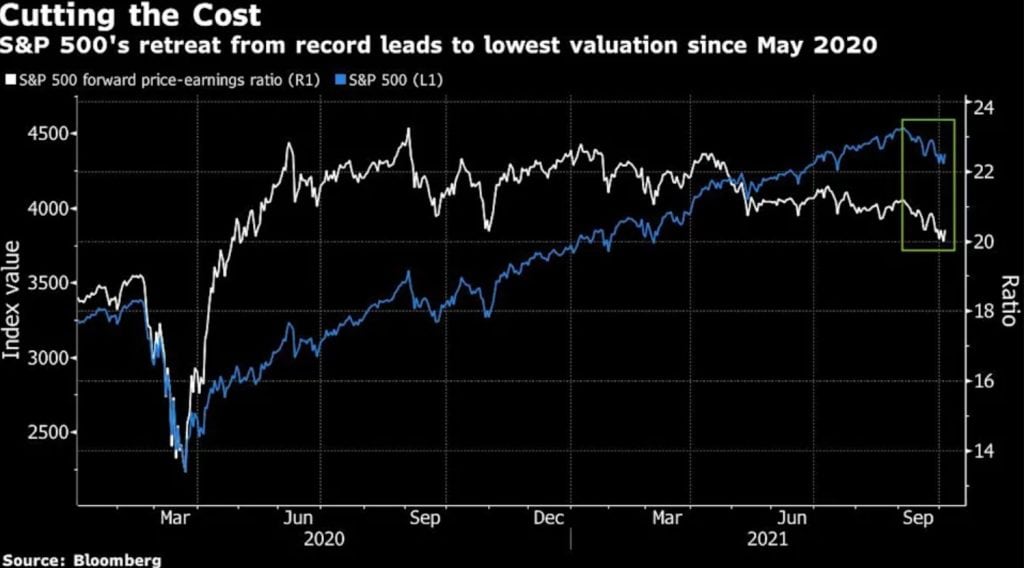
Bitcoin just made a major comeback.
The cryptocurrency rallied on Wednesday, topping $55,000 and hitting its highest level since mid-May. Regulatory fears have eased this week after both Treasury Secretary Janet Yellen and SEC chair Gary Gensler said they have no plans to impose restrictions on cryptocurrency trading.
Bill Baruch, president of Blue Line Capital, had a plan over the summer to beef up his position in bitcoin as its price plummeted – re-entering at $32,000 and adding to it if it fell to as low as $20,000.
“It didn’t get there. I didn’t get my full position on but what that ultimately did is it got me doing more research and trying to find where else could I invest this money that I want to be in crypto,” Baruch told CNBC’s “Trading Nation” on Wednesday.
Baruch highlights two cryptocurrencies he is getting behind as an alternative to bitcoin – Solana and Algorand.
“Solana is actually my highest holding right now, got in that at a good time and that has risen pretty sharply. I think that has legs to go as well from here… and Algorand to me feels like Solana two to three years ago,” he said.
Algorand looks constructive on the charts, he continues. Baruch says it looks to be a buy so long as it holds above $1.50. It traded at $1.82 on Wednesday.
Delano Saporu, founder of New Street Advisors, says greater adoption for bitcoin should support a continued rebound.
“You’re looking at more institutions getting involved. We saw US Bank is going to offer institutional custody services. We’re also seeing Bank of America implementing research on Bitcoin as well so I think there is still more room to run,” he said during the same segment.
More constructive headlines in the cryptocurrency world will have a domino effect of drawing more funds into the space, he says.
“That’s going to drive a little bit of momentum and a spike forward if we get some more volume in the buying. I think that could push us a little bit higher here … so I’m still buying. I think it’s an opportunity for investors to really do some more due diligence and see if it makes sense for them as well,” Saporu said.
Asian stocks rose Thursday after progress on the debt-ceiling impasse in Washington lifted equities on Wall Street and optimism about renewed dialogue between the U.S. and China. Treasuries dipped as traders await key American jobs data.
MSCI Inc.’s index of Asia Pacific stocks was on track for its biggest gain since Aug. 31. Hong Kong jumped as a technology gauge bounced from a record low after the Nasdaq 100 rose. Shares also climbed in Japan and South Korea. U.S. futures gained after the S&P 500 closed higher on a possible deal to boost the debt ceiling into December. That would alleviate the immediate risk of a default but leave the political fight simmering in Washington.
Further aiding the fragile sentiment, President Joe Biden plans to meet virtually with Chinese President Xi Jinping before the end of the year, and Russia offered to ease Europe’s energy crunch. Meanwhile, the European Central Bank is studying a new bond-buying program to prevent any market turmoil when emergency purchases get phased.
The yield on the U.S. 10-year Treasury note edged up. Investors are continuing to weigh the economic recovery against inflation risks from a jump in energy costs. ADP employment data beat expectations and a robust U.S. nonfarm payrolls report Friday could cement predictions of a reduction in Federal Reserve stimulus starting next month.
Still, investors remain on edge as they grapple with a panoply of risks, including monetary-policy tightening to tackle price pressures and the impact on Chinese growth of Beijing’s curbs on a debt-laden property sector as well as the global energy crunch. Natural gas prices — up as much as 40% at one point — turned lower after Russia’s President Vladimir Putin said the country is ready to help.
“We have several things that we are watching right now — certainly the debt ceiling is one of them and that’s been contributing to the recent volatility,” Tracie McMillion, head of global asset allocation strategy at Wells Fargo Investment Institute, said on Bloomberg Television. “But we look for these 5% corrections to add money to the equity markets.”
On the geopolitical front, U.S. Secretary of State Antony Blinken criticized China’s recent military maneuvers around Taiwan. Pressed on the financial woes of Chinese property developer China Evergrande Group, Blinken said the U.S. is looking to China “to act responsibly and to deal effectively with any challenges.”
Crude oil retreated from a seven-year high in the wake of growing U.S. inventories and after Russia’s signal. In cryptocurrencies, Bitcoin fluctuated between $54,000 and $55,000. Chinese markets are shut for a holiday and reopen on Friday.
For more market analysis, read our MLIV blog.
Here are some events to watch this week:
- Reserve Bank of India monetary policy decision on Friday
- The U.S. Labor Department releases unemployment and job creation data Friday
Some of the main moves in markets:
Stocks
- S&P 500 futures rose 0.6% as of 11:27 a.m. in Tokyo. The S&P 500 rose 0.4%
- Nasdaq 100 futures increased 0.8%. The Nasdaq 100 rose 0.6%
- Topix index rose 0.7%
- Australia’s S&P/ASX 200 Index added 0.7%
- Kospi index rose 1.7%
- Hang Seng Index rose 2.1%
Currencies
- The Japanese yen was little changed at 111.49 per dollar
- The offshore yuan was at 6.4531 per dollar
- The Bloomberg Dollar Spot Index was little changed
- The euro traded at $1.1557
Bonds
- The yield on 10-year Treasuries ticked up to 1.54%
- Australia’s 10-year bond yield fell about two basis points to 1.59%
Commodities
- West Texas Intermediate crude fell 0.9% to $76.70 a barrel
- Gold was at $1,759.83 an ounce
























